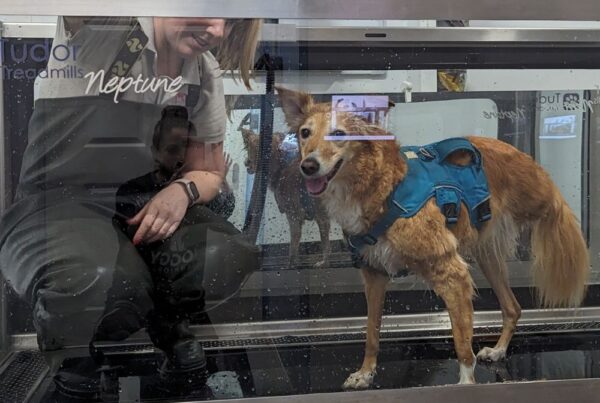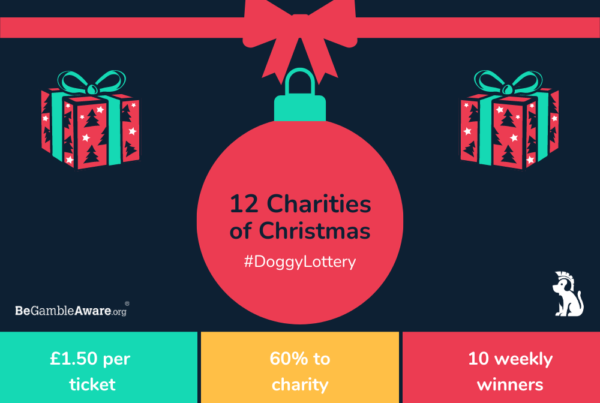
Dog theft is on the rise in the UK, and it’s an issue that is causing fear and anguish in communities up and down the country.
We spoke to the team at DogLost – a national charity that works to reunite lost or stolen dogs with their owners – to get a better understanding of dog theft and to find out what we could and should be doing to keep our pet pooches safe.
Why is Dog Theft on the Rise?
Here at DoggyLottery, we were shocked and saddened when DogLost told us that they have seen a whopping 170% increase in dogs registered as stolen in 2020 compared to 2019. So far this year, 151 stolen dogs have been registered with DogLost, which is a 50% increase compared to figures from 2020. These alarming statistics show that dog theft in the UK is very much on the rise.
If you’re a regular reader of The Doggy Times – DoggyLottery’s blog – you’ll have seen us talking about the growing problem of ‘pandemic puppies’ and the impact of Covid-19 on dog rescue centres. Since the beginning of the pandemic in Spring 2020, demand for dogs has soared. Life has changed for all of us – people are spending more time at home, and for many, there has never been a more convenient time to get a dog.
Not only has this high demand prompted breeders to up their fees considerably, but it has also encouraged criminals to steal dogs either for the purpose of breeding or to sell on. It’s absolutely heartbreaking to imagine the stress and discomfort this causes stolen dogs and the agony felt by the families involved.
A national survey recently conducted by Sussex Police revealed that 79% of dog owners are now apprehensive about walking their pups during the day time. 83% had grown more fearful of dog walking after dark. But the truth is that dogs aren’t just being stolen out in public spaces; thieves are also targeting homes and gardens.
Breeds Most Likely to be Stolen
Sadly, there are some breeds that are more likely to be stolen than others, and that’s because the demand for these dogs is so high. According to DogLost, these are the breeds that were stolen most in 2020:
- Cocker Spaniel
- Springer Spaniel
- Jack Russell
- French Bulldog
- Labrador
If your dog isn’t a breed on this list, then we can imagine that you’re probably breathing a sigh of relief right now. However, we would still strongly advise you to remain vigilant. These certainly aren’t the only breeds targeted by thieves. And for those of you whose dog is on this list and you’re now feeling extremely concerned, please try not to worry. The team at DogLost were kind enough to share some great tips for keeping your dog safe, and we’ll be sharing them in this article.
Where are Dogs Stolen From?
There have been lots of stories in the news recently of dogs being stolen from their owners whilst out walking – situations often involving intimidation and violence. While this certainly does happen, the incidence rate is actually quite low. Still, you should always stay alert when out walking with your pup and take precautions to keep you and your four-legged friend safe.
The majority of dog theft happens from the place you’d least expect it – your own garden. This is particularly alarming. When our pets are on our property, it’s easy to assume they’re safe. The same goes for our cars. You might think your dog is safe when they’re shut in your car alone for a short while, perhaps while you’re popping into a shop, but thieves are very capable and practised at breaking into cars and snatching dogs. The team at DogLost told us that many thieves now have car fobs, meaning they can easily break into cars that are unattended.
Another hotspot for dog theft is outside shops. It can only take a few moments for a thief to snatch your pup when they have been left tied up outside a shop. You may have only left them for a few minutes, but this is enough time for your dog to be taken.
Tips to Keep Your Dog Safe
Dog theft is a serious and growing problem in the UK, so it’s never been more important that dog owners take steps to keep their beloved pets safe. From their years of experience dealing with dog theft and all the cases they have been involved with, DogLost have been able to provide us with a list of top tips for keeping your dog safe from theft.
- Dogs are most at risk in your back garden, so you must ensure that your property is secure. Never leave your dog outside in your garden unsupervised.
- Never leave your dog outside a shop or in a car, even if you are just nipping in for a couple of minutes. That’s more than enough time for a thief to steal your dog.
- When out on a dog walk, ensure that your pup has excellent recall and keep them in view at all times.
- Consider alternating your dog walking route and the time that you head out. This reduces the risk of thieves tracking your behaviour and planning a robbery.
- If you can, walk your dog with another person and try to stick to populated areas.
- If you are approached by a person who attempts to take your dog, or even if someone acts suspiciously around your dog, you should immediately report this to the police using their non-emergency phone number, 101.
- BE ALERT, BE AWARE, BE VIGILANT
What Can You Do to Help?
Our efforts to combat dog theft must go further than protecting our dogs from thieves. The problem is deeply rooted in the pet market itself, so current dog owners and would-be dog owners everywhere must change their behaviour to help the situation.
Justine Quirk at DogLost says, ‘We need people who are looking to purchase a new dog to really think about where their dog has come from. In the case of adult dogs, why is this person really selling an adult dog? Can they prove they are the long-term owner of this dog, either through photos or by providing microchip details and/or veterinary statements?
‘In the case of puppies, always use registered breeders or hobbyist breeders, or please consider adopting from your local dog rescue centre. Sadly, there are so many people breeding dogs just for the money, which has only helped to inflate the perceived “value” of dogs which encourages thieves to steal them.
‘We recommend that all new dog owners with a dog of any age register with a veterinary practice immediately. Ask the vet to check the dog’s microchip to ensure the chip is working, the numbers are correct and that the microchip hasn’t been flagged as lost or stolen.’
You can also put pressure on your local MP and lawmakers to make dog theft a more serious crime in the eyes of the law. Shockingly, only 1% of dog theft cases result in prosecution. Even worse, dogs are considered replaceable possessions rather than much-loved sentient beings. Losing a dog in this way is absolutely devastating, and the crime goes beyond theft – it’s animal cruelty too. We share the belief that changes must be made to the law so that dog theft is investigated, tried and punished as a serious crime.
DogLost is a national non-profit service run via a network of incredible volunteers, working to support the owners of lost and stolen dogs and reunite them with their beloved pets. The team gives practical advice to those whose dog has sadly been stolen or become lost, and provides an online listing service where owners can post up-to-date, shareable information about their missing pet. Over the last 12 years, DogLost has helped to reunite nearly 55,000 dogs with their owners.
We would like to thank DogLost for kindly talking to us and sharing their insights into this important topic.



